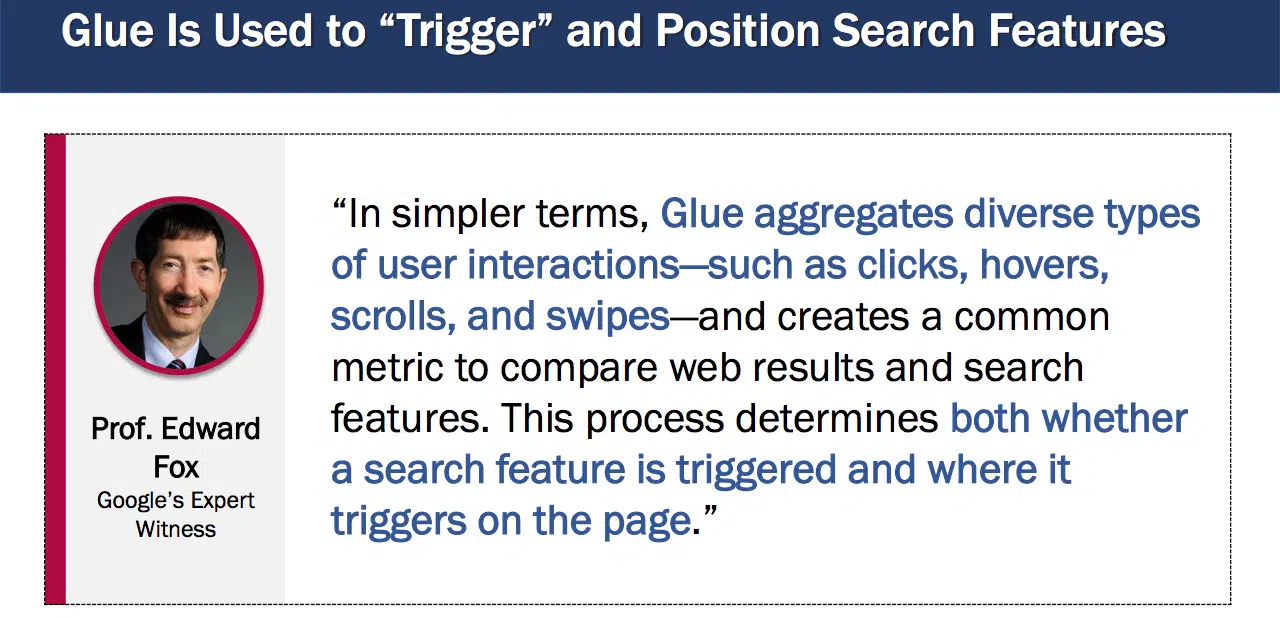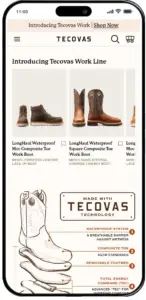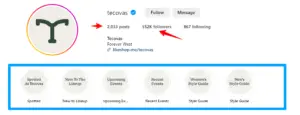Two years ago, I had the privilege of giving a conference at the prestigious McGill University in Montreal, Québec. Each year, I am invited to share my perspective on the evolution of marketing. My philosophy has always been that the future of marketing is intrinsically tied to the development of algorithms. Moreover I came across this podcast from Freakonomics highlighting some issues encounters by Google search.
Today, virtually everyone relies on the internet and mobile devices to discover new information, choose travel destinations, pick books to read, find events to attend, explore music, or decide what movies to watch.
The point is clear: to succeed, marketers must effectively leverage the platforms that connect them to their markets—platforms like Google, Amazon, Meta, and Netflix. A recent study by Sparktoro analyzed where users spend time versus where referral traffic originates. The findings underscore that Google remains the leading source of referral traffic to the open web:
“Yes, Google sends close to 2/3rds of all referral traffic to US websites (of the top 170 referrers). No, that doesn’t mean Google is the best, only, or most important place for every website owner/marketer to put their growth efforts.”
This is why I devote significant time to analyzing Google—or Alphabet, if you will. While the company is engaged in a fierce battle in the AI space, search remains its cornerstone. Just look at its revenues and Traffic Acquisition Costs (TAC).
Why Marketers Should Care About Google
On October 18, 2023, Pandu Nayak, then Vice President of Search at Google, provided testimony during the anti-trust hearings.
His insights were incredibly enlightening for search marketing professionals eager to understand Google’s inner workings. You can read the transcript here.
Navboost and Glue
Nayak elaborated on ranking factors like Navboost and its counterpart Glue, which use click data from the past 13 months to influence search rankings and SERP features.
Navboost: This tool analyzes click data to help rank websites. It tracks how often users click on specific links for particular queries. The more clicks a site receives, the more likely Navboost is to view it as a relevant result, potentially boosting its ranking.
Glue: While Navboost focuses on ranking individual pages, Glue considers user interactions with features on the search results page (SERP) such as video carousels, image packs, and featured snippets. Glue uses the same 13-month user data to prioritize SERP elements that enhance user satisfaction. For example, if users engage heavily with video carousels for movie searches, Glue will prioritize those features for similar queries.

Deep Learning Models and Human Evaluation
Google also leverages advanced deep learning models such as RankBrain, RankEmbed, BERT, and DeepRank. These models analyze user behavior, including clicks and search queries, to continuously refine search results.
Additionally, Google employs human evaluators to assign “Information Satisfaction” (IS) scores. These evaluations help Google ensure its algorithms deliver high-quality results.
Key Takeaways for E-Commerce Entrepreneurs
Understanding Google’s algorithms can inform your acquisition strategy because user engagement is now a critical ranking factor. Here are the essential elements marketers should focus on:
Prioritize User Engagement
Instead of obsessing over total sessions or traffic volume, shift your focus to engagement metrics in tools like Google Analytics. Key indicators include:
- Scroll depth
- Logins
- Add-to-cart actions
- Abandoned carts
- Percentage of repeat visitors
- On-site search usage
Achieving “long clicks”—where users stay on your site—is more valuable than high bounce rates. Avoid giving users a reason to return to search results by delivering a top-tier user experience.
Tecovas : Best in class
I particularly like what Tecovas is doing. Their website is a heaven for all the fans of western wear or cowboy boots. Here are few highlights from their UX :

Clear and Consistent Branding:
- The Tecovas logo is prominently placed, ensuring brand recognition and trust.
- Consistent use of fonts, colors, and design elements enhances brand recall.
Strong Visual Hierarchy:
- Product images are large, clear, and well-lit, helping customers instantly understand what’s being offered.
Key product features (e.g., waterproof, composite toe, removable footbed) are displayed in an infographic-style format, making information digestible and engaging.
Mobile-First Design:
- The layout is optimized for mobile devices, with a clean interface, easy navigation, and minimal scrolling needed to access key information.
- Large, clickable elements ensure a smooth mobile user experience.
Feature-Driven Storytelling:
- The section “Made with Tecovas Technology” highlights product differentiation with clear benefits. This approach emphasizes why the product stands out.
- Visual explanations (like the cutaway boot diagram) make technical features accessible to all audiences.
Call-to-Action (CTA):
- A prominent “Shop Now” link at the top encourages immediate action.
- Strategic placement of product categories ensures users can quickly browse other items in the collection.
Educational Content:
- The infographic-style section educates users about the product’s benefits (e.g., waterproof system, ASTM standards). Educational content builds trust and reduces buyer hesitation.
Customer-Centric Design:
- The website focuses on the user by providing product details and technology benefits upfront, reducing the need for additional clicks.
- Prioritizing transparency with detailed product descriptions enhances user trust and engagement.
Seamless Navigation:
- The menu and search options are intuitive, ensuring users can easily find what they need without frustration.
- Categorization of products (e.g., “Work Line”) simplifies the browsing experience.
Three Core Principles for Success
User Experience is Paramount:
Create a fast-loading, mobile-friendly, and easy-to-navigate website. A seamless experience encourages users to stay, signaling to Google that your site is valuable.
Build a Strong Brand:
Invest in multi-platform brand awareness campaigns. A recognizable brand often results in higher click-through rates, which can enhance your search rankings.
Create High-Quality, Intent-Driven Content:
Understand the intent behind user searches and address those needs with comprehensive, engaging content. Use diverse formats such as blogs, videos, and infographics to capture attention. This is exactly what brands such as Tecovas are doing. They have a very strong brand content strategy and social media presence. On Instagram they publih engaging content and they are consistent.

Stay Informed About Algorithm Updates
While manipulating specific ranking factors may not yield long-term results, staying informed about Google’s algorithm changes ensures you’re always adapting your strategy to remain competitive.
The future of marketing lies in understanding and leveraging the algorithms that govern user interactions. By focusing on user engagement, enhancing website experience, and staying informed about algorithmic changes, marketers can position themselves for long-term success in an increasingly competitive digital landscape.
Let’s keep exploring and sharing insights to stay ahead in the ever-evolving world of digital marketing.
Stay in touch with me.
FAQ: Insights from Pandu Nayak’s Testimony on Google Search
1. What is Navboost, and why is it important for SEO?
Navboost is a crucial Google ranking signal trained on user click data from the past 13 months. It helps Google understand which results users find most relevant for specific queries based on historical click patterns. Understanding Navboost is vital for SEOs because it highlights the importance of user engagement and satisfaction as ranking factors. Ultimately, it reinforces the need to create content that users find valuable and are likely to click on and spend time with.
2. How do Glue and Tangram relate to search results pages (SERPs)?
Glue is the system that informs which additional features (like video carousels or “People Also Ask” boxes) are populated on a SERP. It likely logs user interactions with these features over the last 13 months. Tangram is the system that assembles all the features on a SERP, acting as the “puzzle solver” that arranges the elements on the page.
3. What role do deep learning models like RankBrain, RankEmbed BERT, and DeepRank play in Google’s ranking process?
RankBrain, RankEmbed BERT, and DeepRank are deep learning models used by Google to understand language and content better. While these models are trained in part on click data, RankBrain analyzes a subset of candidate documents. RankEmbed BERT turns words into math using word embeddings and vectors. DeepRank refines search results based on a deeper understanding of user intent and content relevance. These models help Google to interpret the nuances of language and context, but Google is hesitant to rely on them exclusively.
4. What are Information Satisfaction (IS) scores, and how does Google use them?
Information Satisfaction (IS) scores are ratings on a 100-point scale assigned by human Search Quality Raters based on Google’s Search Quality Evaluator Guidelines. Google uses these scores to measure search performance, fine-tune algorithms, and conduct experiments. IS scores provide a gut check on the impact of algorithmic changes and help Google quickly assess whether a new feature or update is improving user satisfaction.
5. What is interleaving, and how does Google use it in algorithm testing?
Interleaving is an algorithm testing method where users are presented with a blended set of results from different algorithm versions, and their interactions (clicks, dwell time, etc.) are analyzed to determine which version performs better. Instead of traditional A/B testing, interleaving allows Google to compare algorithm performance in a more nuanced way, taking into account the relative performance of different result sets.
6. How important are engagement signals (user interaction signals) for SEO?
Engagement signals, such as long clicks and reduced pogo-sticking (returning quickly to the search results page), are essential for SEO. They indicate user satisfaction, which Google uses to assess the relevance and value of a webpage. SEOs should focus on creating content that thoroughly satisfies user intent and provides a positive user experience to improve engagement signals.
7. How can SEOs apply the knowledge of Google’s algorithms (like Navboost) to their client work?
Understanding Google’s algorithms enables SEOs to focus on long-term strategies such as creating valuable, user-centric content that satisfies user intent and provides a positive user experience. Knowing that Navboost relies on click data, SEOs can focus on brand building, creating compelling meta descriptions, and scaling short-form content to capture long-tail queries. It also involves understanding user intent and catering to the “why” behind their searches to provide comprehensive solutions.
8. How does the author interpret Google’s past statements about not using user signals in ranking?
The author believes that Google’s past statements were often technically correct, but didn’t present the whole truth. While Google might have denied using specific metrics like click-through rate as a direct ranking factor, they did consider user interactions within a larger model. This approach allowed Google to be accurate while maintaining secrecy about the specific details of their ranking algorithms.






